AMD Announces Ryzen 5 Lineup: Hex-Core from $219, Available April 11th
by Ian Cutress on March 15, 2017 10:00 PM EST_678x452.jpg)
As part of our initial Ryzen 7 review, AMD also teased the presence of two more elements to the Ryzen lineup, specifically Ryzen 5 and Ryzen 3, both aiming at a lower cost market and allowing AMD to sell some of the silicon that didn’t quite make it to the Ryzen 7 lineup. Today is the official announcement for Ryzen 5, featuring four processors in hex-core and quad-core formats, all with Simultaneous Multi-Threading (SMT) and all using the same AM4 platform as Ryzen 5.
Ryzen 5
Whereas Ryzen 7 was AMD’s main attack on high-performance x86 and a shot across the bow against Intel’s high-end desktop platform, Ryzen 5 is targeted more at mainstream users. The goal here is that where Intel has four cores with no hyperthreading, AMD can provide six cores with SMT, effectively offering three times as many threads for the same price and potentially smashing any multithreaded workload.
Without further ado, here is where the Ryzen families stand:
| AMD Ryzen 7 SKUs | |||||||
| Cores/ Threads |
Base/ Turbo |
XFR | L3 | TDP | Cost | Cooler | |
| Ryzen 7 1800X | 8/16 | 3.6/4.0 | +100 | 16 MB | 95 W | $499 | - |
| Ryzen 7 1700X | 8/16 | 3.4/3.8 | +100 | 16 MB | 95 W | $399 | - |
| Ryzen 7 1700 | 8/16 | 3.0/3.7 | +50 | 16 MB | 65 W | $329 | Spire RGB |
| AMD Ryzen 5 SKUs | |||||||
| Cores/ Threads |
Base/ Turbo |
XFR | L3 | TDP | Cost | Cooler | |
| Ryzen 5 1600X | 6/12 | 3.6/4.0 | +100 | 16 MB | 95 W | $249 | - |
| Ryzen 5 1600 | 6/12 | 3.2/3.6 | +100 | 16 MB | 65 W | $219 | Spire |
| Ryzen 5 1500X | 4/8 | 3.5/3.7 | +200 | 16 MB | 65 W | $189 | Spire |
| Ryzen 5 1400 | 4/8 | 3.2/3.4 | +50 | 8 MB | 65 W | $169 | Stealth |
Traditionally we are used to a part with fewer cores having a higher clock frequency, however perhaps due to the voltage scaling of the design, we see a matched Ryzen 5 1600X in frequency to the Ryzen 7 1800X, but the rest of the Ryzen 5 family are offered at a lower TDP instead.
All the Ryzen 5 parts are unlocked, similar to the Ryzen 7 parts, and all four exhibit some movement in XFR mode, with the 1500X offering +200 MHz depending on the cooler used. AMD is going to offer some of these SKUs with their redesigned Wraith coolers:
It is worth noting that the Wraith Spire for Ryzen 5 will not have RGB lighting, whereas the Wraith Spire for Ryzen 7 does use an RGB ring. OEMs will be able to use the higher-end Wraith Max stock cooler for their pre-built systems. AMD stated that at present, there are no plans to bring the Wraith coolers to retail as individual units, however they will keep track of how many users want them as individual items and regularly approach the issue internally.
To clarify some initial confusion, AMD has given me official TDP support numbers for the coolers. The entry level Wraith Stealth is 65W, the Wraith Spire is 65W for high-ambient conditions (AMD states this might be considered an '80W' design in low-ambient), and the Wraith Max is 95W for OEM builds using Ryzen 7 95W parts.
All the Ryzen 5 parts will support DDR4 ECC and non-ECC memory, and the memory support is the same as Ryzen 7, and will depend on how many modules and the types of modules being used. Recently companies like ADATA announced official support for AM4, as some users have found that there were memory growing pains when Ryzen 7 was launched.
Platform support for Ryzen 5, relating to PCIe lanes and chipset configurations, is identical to Ryzen 7. Each CPU offers sixteen PCIe 3.0 lanes for graphics, along with four lanes for a chipset and four lanes for storage. Chipsets can then offer up to eight PCIe 2.0 lanes which can be bifurcated up to x4 (AMD GPUs can use chipset lanes for graphics as well, however at reduced bandwidth and additional latency).
Competition
The high-end Ryzen 5 1600X, at $249, is a shoe-in to compete against Intel’s i5-7600K at $242. Intel’s CPU is based on the Kaby Lake microarchitecture, and we’ve already shown in the Ryzen 7 review that by comparison Ryzen is more circa Broadwell, which is two generations behind. AMD won’t win much when it comes to single-threaded tests here, but the multi-threaded situation is where AMD shines.
| Comparison: Ryzen 5 1600X vs Core i5-7600K | ||
| AMD Ryzen 5 1600X |
Features | Intel Core i5-7600K |
| 6 / 12 | Cores/Threads | 4 / 4 |
| 3.6 / 4.0 GHz | Base/Turbo | 3.8 / 4.2 GHz |
| 16 | PCIe 3.0 Lanes | 16 |
| 16 MB | L3 Cache | 6 MB |
| 95 W | TDP | 91 W |
| $249 | Price (MSRP) | $242 |
Here we have twelve threads against four, at a 95W TDP compared to a 91W TDP (the 1600 is 65W, which looks better on paper). It is expected that for situations where a compute workload can scale across cores and threads that the AMD chip will wipe the floor with the competition. For more generic office workloads, it will interesting to see where the marks fall.
On the quad-core parts, there are several competitive points to choose from. The AMD Ryzen 5 1500X, at $189, sits near Intel’s Core i5-7500 at $192. This would be a shootout of a base quad-core versus a quad-core with hyperthreading.
| Comparison: Ryzen 5 1500X vs Core i5-7500 | ||
| AMD Ryzen 5 1500X |
Features | Intel Core i5-7500 |
| 4 / 8 | Cores/Threads | 4 / 4 |
| 3.5 / 3.7 GHz | Base/Turbo | 3.4 / 3.8 GHz |
| 16 | PCIe 3.0 Lanes | 16 |
| 16 MB | L3 Cache | 6 MB |
| 65 W | TDP | 65 W |
| $189 | Price (MSRP) | $182 |
The reason why I didn’t pull out the Core i3-7350K there, at $168, is because the performance of the 7350K sits near the Pentium G4560, which is only $64 (and the subject of an upcoming review). That all being said, the $168 price of the i3-7350K matches up to the $169 price of the Ryzen 5 1400, although the 1400 has double the cores and double the threads of the 7350K.
Cutting up the Cores
Ryzen 5, both the hex-core and the quad-core variants, will use the same eight-core base Zeppelin silicon that Ryzen 7 does.
The silicon design consists of two core complexes (CCX) of four cores apiece, and each with 8MB of L3 cache that is an exclusive victim cache. One of the suggestions regarding Ryzen 7’s performance was about thread migration and scheduling on the core design, especially as core-to-core latency varies depending on where the cores are located (and there’s a jump between CCXes). Despite the use of AMD’s new Infinity Fabric, which is ultimately a superset of HyperTransport, there is still a slightly longer delay jumping over that CCX boundary, although the default Windows scheduler knows how to manage that boundary as demonstrated by Allyn at PCPerspective earlier this week.
So when dealing with a four-core or six-core CPU, and the base core design has eight-cores, how does AMD cut them up? It is possible for AMD to offer a 4+0, 3+1 or 2+2 design for its quad-core parts, or 4+2 and 3+3 variants for its hexacore parts, similar to the way that Intel cuts up its integrated graphics for GT1 variants. The downside with this way is that performance might differ between the variants, making it difficult to manage. The upside is that more CPUs with defects can be used.
We have confirmation from AMD that there are no silly games going to be played with Ryzen 5. The six-core parts will be a strict 3+3 combination, while the four-core parts will use 2+2. This will be true across all CPUs, ensuring a consistent performance throughout.
Performance Estimates
We won’t have these CPUs in for a while, but given our new benchmark suite and the results we’ve seen so far with Ryzen, we’ve tried to lay out some estimates in performance in both single thread and multi-threaded workloads.
Single thread performance is easy enough to estimate – we work from the turbo and XFR frequencies of each processor. For users looking for peak single thread performance, something like Intel’s Pentium G3258 or i3-7350K that can be overclocked to 5GHz+ (or starts as a base 4.2 GHz) is going to be a performance per dollar crown here. On the AMD side, we expect the Ryzen 5 1600X to match the Ryzen 7 1700X as it has the same frequency.
Multithreaded is more difficult to predict. Some of our benchmarks offer perfect scaling across cores and threads, meaning that if you half the cores, you get half the score. Some of the benchmarks are not as clear cut though, hence why we see something like Intel’s Core i3-7350K, which should get about half the score of an i7-7700K, scoring 65% instead of 50%. We’ve tried to take this into account with the Ryzen 5 parts, and we get the graph above.
The key results here show that the 1600 and 1600X should sit way above the i5-7600K, and the 1600X should offer so much better performance per dollar than the Core i7-7700K.
On overall performance, taking the combination of results (our suite is slightly unbalanced in favor of MT, but this is taken into consideration) we funnily see a straight line between the 1800X, 1700X, 1700, 1600 and 1500X, putting the 1600X at a really good position as a performance per dollar CPU.
The caveat here is that the Ryzen 7 processors came across as good workstation processors. Ryzen 7 was marketed towards that group of users, and it made sense. Ryzen 5 is more targeted towards mainstream gamers and users, which might offer some interesting results. Our results don’t feature any gaming numbers yet (still working on a Ryzen 7 part 2 for this), but it will be interesting to see how the core counts and frequency will affect gaming performance.
The Bottom Line
Ryzen 5.
Two CPUs with six-core, from $219-$249.
Two CPUs with four-core. From $169-$189.
Retail availability on April 11th.
Stay tuned for the AnandTech review.
(Ryzen 3 is still slated for 2H17.)


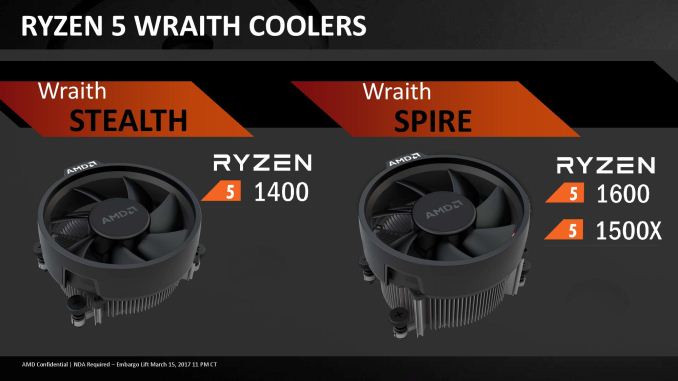
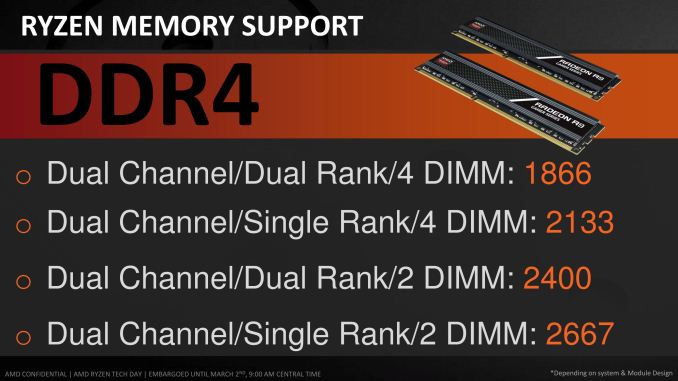
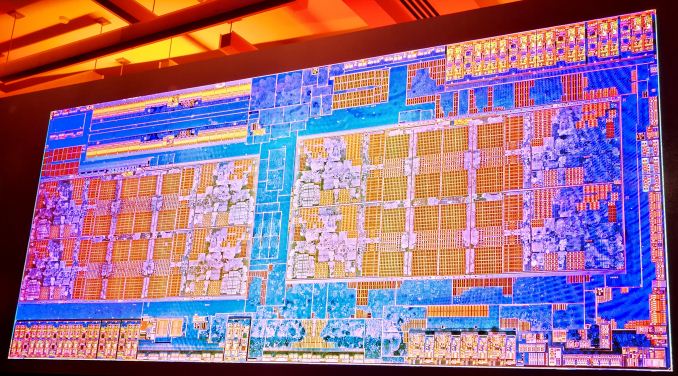
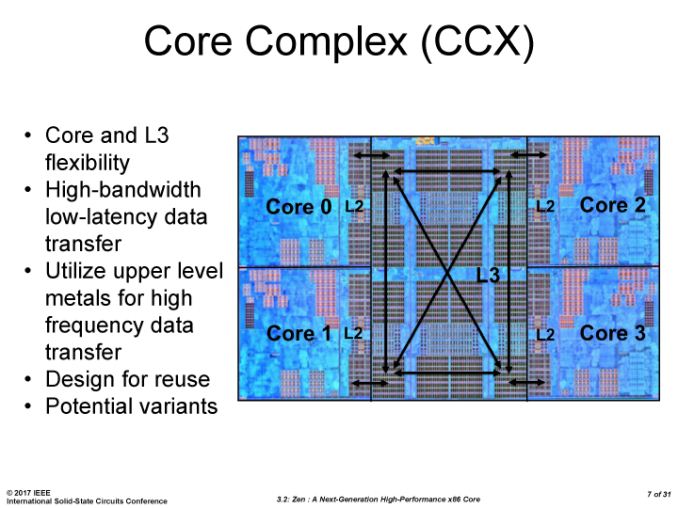
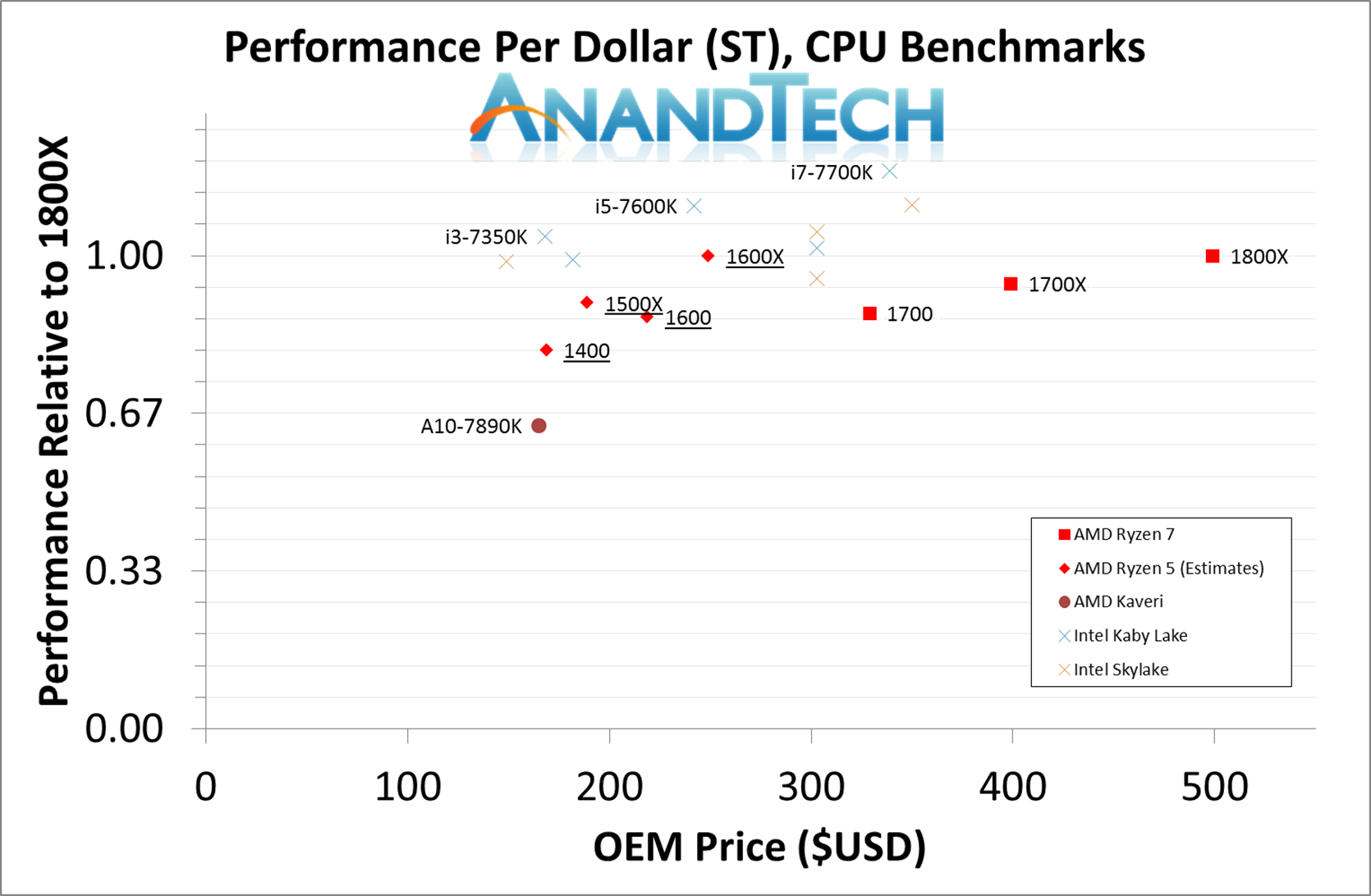


_thumb.jpg)
_thumb.jpg)
_thumb.jpg)
_thumb.jpg)
_thumb.jpg)
_thumb.jpg)








229 Comments
View All Comments
Psycho tek - Friday, March 17, 2017 - link
People commenting here only thinks of themselves. Like they need high fps their cpu can do the same as Ryzen can do.... jeeezz..Think of it this way.... AMD has given the us a cpu that is more affordable than intel and because of this the third world country can easily afford this type of cpu coz we cannot deny that those people there are creative and more intelligent than people with a pc having high fps and expensive waterloop.
Ryzen is not only for gaming (which is decent by the way), it is also for content creation and other stuff ( hacking maybe... lol). And the success of AMD will come from thise countries.
Just be happy with your intel cpu and let the loyalist enjoy their Ryzen. And do this argument after 4 years about which cpu is still relevant at that time.
Hixbot - Saturday, March 18, 2017 - link
Wow, was really hoping the lower core count i5's would be clocked higher that the 8 core i7s.goldstone77 - Saturday, March 18, 2017 - link
To see an image with no or little movement there is no to very little discernible difference in the smoothness of the image at 60HZ, 120HZ, or 144HZ with solid FPS. It's when you have a lot of quick movement, and a drop or drops in FPS that images become very noticeable at these different frame rates. The refresh rate of the monitor also drops significantly as well when FPS than the monitors refresh rate. 60HZ drops to 30 HZ. This will be extremely noticeable and decrease the perceived smoothness of the image. 144HZ dropping to 72HZ not as noticeable. A video card consistently dropping frames below the monitors refresh rate has in impact on the smoothness of the video. Than there is the difference in color on high fps TN monitors as opposed to IPS monitors. IPS having better picture quality. 60HZ on a 144HZ monitor is going to look better than 60HZ on a 60HZ monitor when it comes to smoothness of fast motion. Move your mouse curser in circles real fast you can see the gaps at 60HZ. at 120HZ or 144HZ the gaps are still there but much less noticeable, because the image is being drawn twice or more a second. I found a good explaination here https://www.rockpapershotgun.com/2015/02/12/best-1...acparker18 - Thursday, March 23, 2017 - link
There is actually a very perceivable difference between 60Hz and 120Hz motion on a monitor. Just like there is a noticeable difference between 30Hz and 60Hz, doubling the amount of images displayed per second is hard to miss. Granted, I doubt there is much difference between 120Hz ans 144Hz, but to say that there is no advantage to higher refresh rate monitors is absurd.albert89 - Saturday, March 18, 2017 - link
I wouldn't mind a RYZEN 5 that's a 4 core (no SMT) with a TDP of 45-50W, OC to 4GHz. And I don't mind paying more for it. Although AMD might convert it to an APU, with HSA, HBM2 etc all thrown into this monster. But this SOC would be more compatible with the mobile market, who knows. Or the APU might come out with a Vega iGPU ???Outlander_04 - Sunday, March 19, 2017 - link
That, I believe, is the planlakedude - Monday, March 20, 2017 - link
It is always amazing to me how rude people are on the interweb. There is no reason for most of it.The bottom line here is that AMD has done an amazing job getting back in the game. The 1600X is an excellent value with more than enough performance for most folks, most of the time. Thing is no one is a "fanboy" for buying or wanting a processor that fits their needs.
Were I still doing HPC and video trans-coding I'd have snatched up a 1600X or perhaps might have even splurged for one of the 8 core models. Intel would not even have been considered for such workloads.
If gaming was still a priority I'd have most likely leaned towards the i7-7700k which is better in lightly threaded apps and cheaper than the Ryzen 7 chips as well. Maybe the i5-7600k if money was an issue.
The point is that you should by the processor that is best matched to your workload/budget. There is no single best CPU for all applications. These new AMD chips are all over the map, crushing it in some benchmarks but lagging behind in others. It should come as no surprise that some people love Ryzen while others remain less impressed.
As it stands I'll buy buying nothing from either company, got too many mouths to feed and honestly 5 year old Ivy Bridge stuff is not that bad.
While I'm babbling... for typical use I think I'd rather have an i3 (or similar) with an SSD, than an i7 or Ryzen 7 with a mechanical HD...
none12345 - Tuesday, March 21, 2017 - link
This is why intel has been annoying the hell out of me for the past 5 years or so. They could have given us an 8 core desktop chip without an igp, for the same price as an i7, and they could have done it 5 years ago.The desktop chips are really just overclocked/volted mobile chips, that they have been milking on the desktop for the last 5 years.
You want more cores you pay 3-6 times as much for the privledge. Which is nearly all profit, considering once you drop the igpu, it doesnt cost anything more to add more cores instead. (granted the 10 core chip costs a bit more to produce, but not twice as much, and certainly not 6 times as much)
msroadkill612 - Monday, April 10, 2017 - link
" It is possible for AMD to offer a 4+0, 3+1 or 2+2 design for its quad-core parts, or 4+2 and 3+3 variants for its hexacore parts, similar to the way that Intel cuts up its integrated graphics for GT1 variants. The downside with this way is that performance might differ between the variants, making it difficult to manage. The upside is that more CPUs with defects can be used.We have confirmation from AMD that there are no silly games going to be played with Ryzen 5. The six-core parts will be a strict 3+3 combination, while the four-core parts will use 2+2. This will be true across all CPUs, ensuring a consistent performance throughout."
Ta for clarifying that.
Could be interestingconsequences. fewer cores = less heat & lots more l3 for each core.
It begs a fascinating question tho.
How will they arrange the raven ridge apu?
the ~a10 apu had about half of the chip space each for the gpu & cpu.
Ir seems safe to assume space will be tight on the coming zen/vega apu.
u would think it may be attractive to use the second l3 cache space for gpu circuitry, in which case we would have 4 core zen using a single l3 cache.